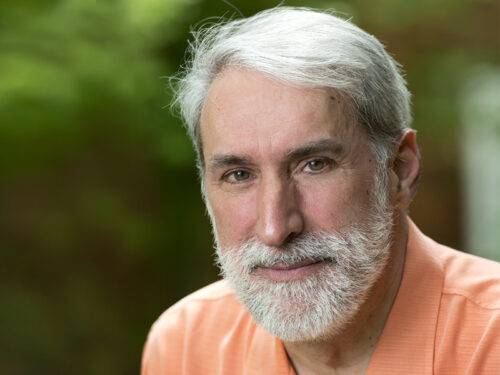
Date: April 14, 2022
Time: 12:30 p.m. - 1:30 pm
Location: Maeder Hall Auditorium
Sustainable and Renewable Carbon, Nitrogen and Phosphorus Cycles for Fuel and Crop Production
Daniel Nocera
Patterson Rockwood Professor of Energy, Harvard University
Abstract
Hybrid biological | inorganic (HBI) constructs have been created to use sunlight, air and water as the only starting materials to accomplish carbon and nitrogen fixation, enabling the establishment of distributed and renewable Fischer-Tropsch and Haber Bosch cycles. The carbon and nitrogen fixation cycles begin with the Artificial Leaf, which was invented to accomplish the solar fuels process of natural photosynthesis – the splitting of water to hydrogen and oxygen using sunlight – under ambient conditions. The hydrogen from the Artificial Leaf may be interfaced to power the Bionic Leaf-C and Bionic Leaf-N to convert carbon dioxide and nitrogen from air into liquid fuels and ammonia, respectively. The Bionic Leaf-C performs and artificial photosynthesis that is 10 times more efficient than the best of natural photosynthesis. The Bionic-Leaf N is a living biofertilzer that can replace chemical fertilizer; it will be shown for a 400-acre farm, the budget saving of carbon dioxide is 253,000 lbs while enhancing crop yields.
Where are these innovations useful? The non-legacy world (one without large, centralized energy infrastructures) will drive future global energy need and it is this cohort in society that is the most important target for renewable energy if global carbon emissions are to be mitigated at large scale. The use of only sunlight, air and water to produce fuel (carbon neutral) and food (carbon negative) within a sustainable cycle for the biogenic elements of C, N and P is thus particularly useful to the poor of the world, where large infrastructures for fuel and food production are not tenable.
Bio
Daniel G. Nocera is the Patterson Rockwood Professor of Energy at Harvard University. Widely recognized in the world as a leading researcher in renewable energy, he is the inventor of the artificial leaf and bionic leaf. Nocera has accomplished the solar fuels process of photosynthesis – the splitting of water to hydrogen and oxygen using light from neutral water, at atmospheric pressure and room temperature. He has performed this solar process at efficiencies of greater than 10%. The artificial leaf was named by Time magazine as Innovation of the Year for 2011. He has since elaborated this invention to accomplish a complete artificial photosynthetic cycle. To do so, he created the bionic leaf, which is a bio-engineered bacterium that uses the hydrogen from that artificial leaf and carbon dioxide from air to make biomass and liquid fuels. The bionic leaf, which was named by the World Economic Forum as the Breakthrough Technology for 2017, performs artificial photosynthesis that is ten times more efficient than natural photosynthesis. Extending this approach, Nocera has achieved a renewable and distributed synthesis of ammonia (and fertilizer) at ambient conditions by coupling solar-based water splitting to a nitrogen fixing bioorganism, which is powered by the hydrogen produced from water splitting. Thus, using only sunlight, air and water, a distributed system powered by renewable energy has been created to produce fuel and food. Such science is particularly useful to the poor of the world, where large infrastructures for fuel and food production are not tenable. Other areas of interest in the group include the first measurement and theory of proton-coupled electron transfer and its application to radical enzymology, the development of new cancer therapies by creating nanocrystal chemosensors for metabolic tumor profiling and the design of spin frustrated materials to explore exotic states arising from highly correlated spins. He created the first quantum spin liquid from S = ½ spins on a kagomé lattice, a long-sought prize in condensed matter physics. Afield from chemistry, Nocera invented the Molecular Tagging Velocimetry (MTV) technique to make simultaneous, multipoint velocity measurements of highly three–dimensional turbulent flows. The technique has been employed by the engineering community to solve a number of long-standing and important problems.